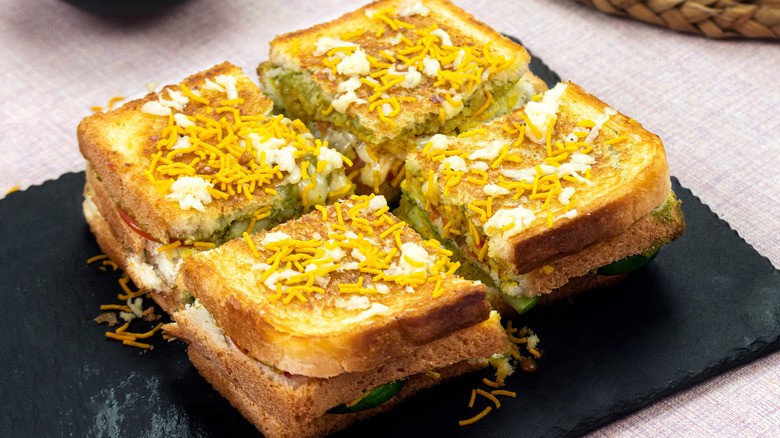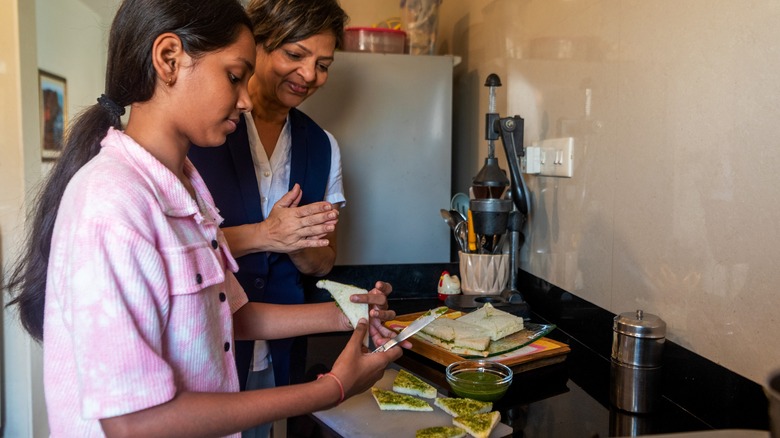How The Bombay Sandwich Outlived The Industry That (Likely) Spawned It
The delicious Bombay sandwich is a famous street food that's grilled and filled with ingredients like boiled potatoes, onions, beetroot, and spicy green chutney. It may have come about sometime in the 1960s as a way to feed migrants from different parts of India who worked in the textile industry of what is now known as Mumbai (formerly Bombay), but this treat has outlived the mills that once populated the area and emerged as one of the most popular sandwiches in the world.
The sandwich's enormous popularity may be partly explained by its convenience and customizability. It uses low-cost and readily available ingredients, is a rather simple recipe, and can be adjusted to match almost anyone's tastes. If you love spicy peppers and onions, you can pile them on. If you prefer a cooler palate, cucumbers are a good choice. You can even choose to add cheese.
In some ways, the Bombay sandwich reflects the history of the area. One of its defining features, white bread, is linked to more than the textile mills. Sliced white bread and sandwiches in general were introduced to the people of India by the British, who once ruled the nation. In fact, an English nobleman known as the Earl of Sandwich, John Montagu, is believed to have been the creator of the bready meal. The Portuguese, who also had colonial influence, brought potatoes and Western-style bread to the country.
A sandwich by any other name
One might take notice of the fact that the sandwich doesn't share the current name of the city from which it hails — it's not called a Mumbai sandwich. Despite the history of some of the ingredients, it also isn't called a "British sandwich" or a "Montagu." Nor is it a "Portuguese sandwich." The people of former Bombay truly created a local dish and gave it their own name.
During the 1960s and 1970s, locals attending school, migrant workers, and those working in offices in the city saw the convenience of the handheld meal. In true entrepreneurial spirit, people set up food carts and stalls to sell their own versions of the Bombay sandwich and a star was born. Both hot and cold versions of the treat became available, with the heated versions being grilled over hot coals. During the 1980s, the demise of the textile industry was triggered by strikes. By the 2000s, those textile mills that helped birth the Bombay sandwich had closed down for good. Yet this fascinating and delicious treat lives on in many varieties and is loved by people all over the world.

